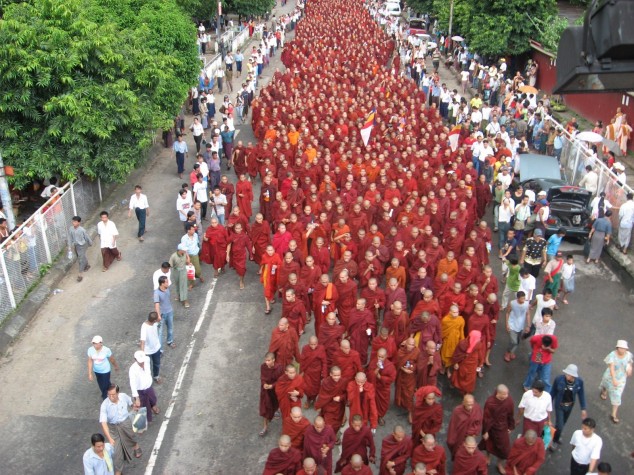Today’s news from the antiquities trade involves a fashion designer, the Opium Wars, Jackie Chan, political blackmail, and a creative act of civil disobedience. The biggest private art auction in world history concluded in Paris at Christie’s last Wednesday, as the collection of fashion designers Yves Saint Laurent and Pierre Bergé sold for $484.6 million (the catalogue alone ran 1,800 pages).
The biggest stir was caused by an anonymous telephone bidder who purchased two Qing dynasty bronze fountainheads for $20 million each. The heads were among a dozen looted in October 1860 by from Beijing’s Old Summer Palace by Anglo-French troops during the Second Opium War. The palace was stripped of artwork prior to its destruction on the orders of Lord Elgin, then British High Commissioner to China. (And, ironically, son of the Elgin of Parthenon Marbles fame). Since the Christie’s sale was announced, the Chinese government has been demanding the return of the bronzes as stolen property. Actor Jackie Chan was quoted in the Times Online as saying “They remain looted items, no matter whom they were sold to. Whoever took it out [of China] is himself a thief. It was looting yesterday. It is still looting today.”
 Cai Mingchao reads his statement (Photo Brothersoft).
Cai Mingchao reads his statement (Photo Brothersoft).The mystery bidder was revealed today as Cai Mingchao, a Shanghai collector and dealer and consultant for China’s National Treasure Fund, a government organization which purchases looted and stolen relics on behalf of the state. There was, however, a catch: Cai declared that he has no intention of paying for the heads, and that he placed the bid in order to sabotage the auction. He excused his action as an act of patriotic civil disobedience: "every Chinese would have done the same as I did. It's just that I got the opportunity. I have fulfilled my duty." He also noted that because the Chinese government had deemed the sale illegal, he would not have been able to take delivery of the heads within China anyhow.
While it is unclear whether Cai’s scuttling of the auction was in any way sanctioned by the Chinese government, it fits with the tenor of its recent statements. The French decision to allow sale of the bronzes caused “serious damage to Chinese people's cultural rights, interests and national sentiments,” according to the China State Administration of Cultural Heritage.
On the surface, it is easy to admire Cai Mingchao for risking his reputation as a dealer and collector in pursuit of historical justice. Among the more repulsive episodes in European colonialism, the Opium Wars were fought to defend unregulated narco-trafficking in China by government-sponsored British and French cartels. Beijing’s Summer Palace was looted and burned as a gesture of revenge, and Chinese still smart from the humiliation.
I am generally sympathetic toward repatriation demands. I also see how useful civil disobedience at auctions could be as a strategy for derailing the sale of obviously looted antiquities. (I have heard of other examples, which I will track down for a different post.) Some further context, however, makes the story a little murkier. Of the original twelve heads, five are missing and five are back in China, making the two YSL heads the only two left on the market. While they are interesting and significant as artifacts, they are not particularly ancient. Nor they even particularly important compared to other looted Chinese treasures floating around the antiquities market. And China already owns most of the extant pieces! I suspect the government has chosen to pursue these particular artifacts in order to whip up nationalist and anti-colonialist sentiment both at home and to sympathetic audiences abroad.
The play of meaning around these artifacts is fascinating. While they were clearly collected by Bergé and Saint Laurent as pure objets d’art, no one involved in the auction pretends that they are only that. Cai and the Chinese government have made them into patriotic symbols, while Bergé used them to snub China with a facile statement about human rights. According to the Daily Telegraph, Bergé offered to give China the heads in return for human rights concessions:
"I acquired them and I am completely protected by the law, so what the Chinese are saying is a bit ridiculous," he said. "But I am prepared to offer this bronze head to the Chinese straight away.
“All they have to do is to declare they are going to apply human rights, give the Tibetans back their freedom and agree to accept the Dalai Lama on their territory.
"If they do that, I would be very happy to go myself and bring these two Chinese heads to put them in the Summer Palace in Beijing. It's obviously blackmail but I accept that."
The amount of real charity behind this “offer” is, of course, nil. As Bergé surely knows, this particular piece of “obvious blackmail” had a 100% chance of strongly offending the Chinese government and zero chance of success. His gesture has the odor of colonialist smugness: the uppity natives might be allowed to have their baubles back if they meet the rational demands of the white man. But of course they won’t because, after all, they’re not very
civilized, now are they, old chap?
It is important, however, that Bergé acknowledges, in principle, that the heads are not simply art objects. Dealers in stolen antiquities often insist that the value of the objects is truly to be found in their inner aesthetic aura, so that their lack of provenance (and the destroyed archaeological sites the looters leave behind), are unimportant. This case exposes a revealing chink in the armor of that argument.
Link roundup: Portfolio on the auction
Portfolio on Cai's announcement
The story in the
Times OnlineDanwei on Cai
The
Daily Telegraph on Bergé's "offer"
Some
AP photos of the bronzes












